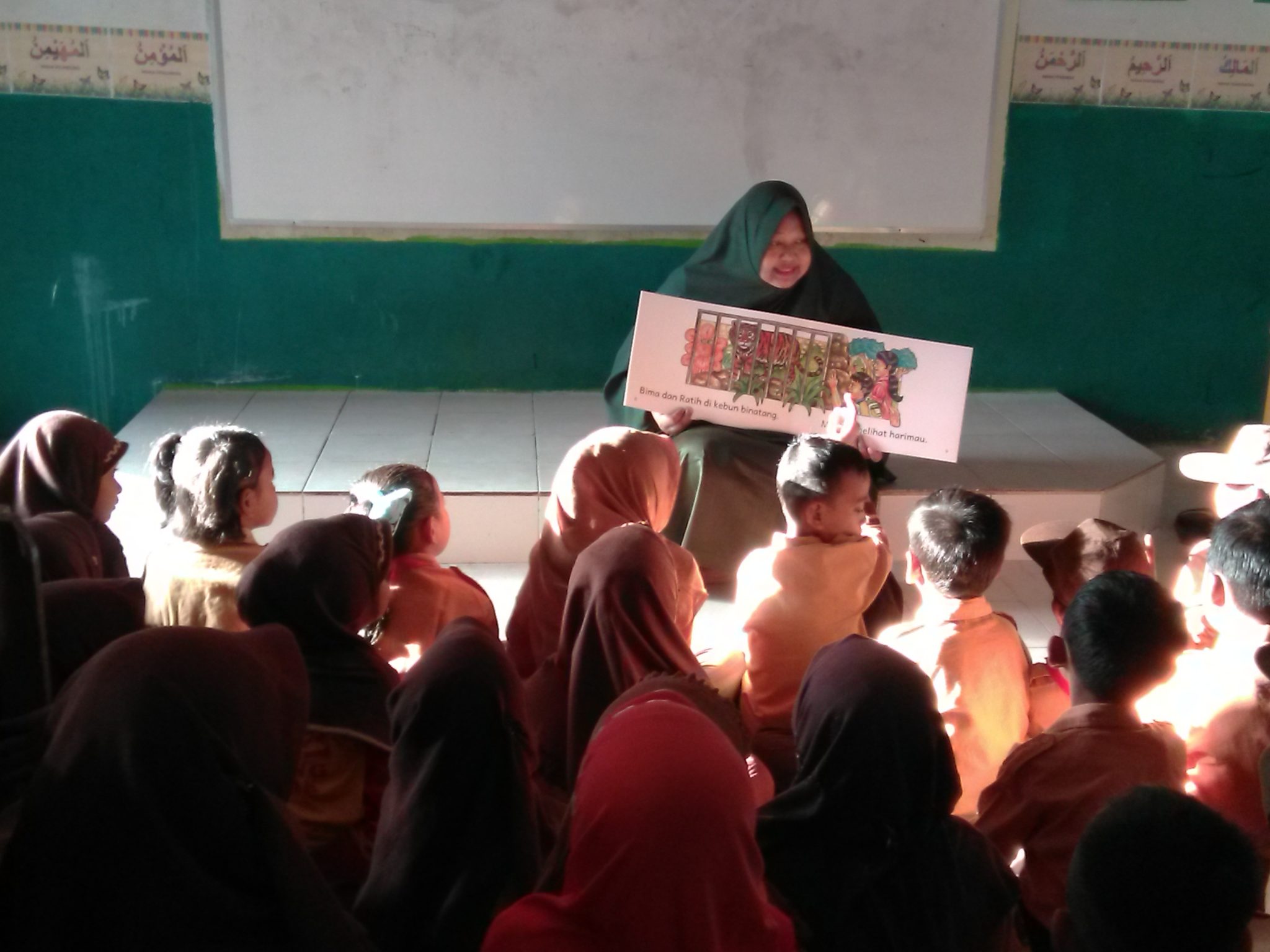The Benefits of Big Books and Joint Reading

Toni’s eyes were fixed on the large book held by his teacher in front of the class. The teacher was reading the story out loud to the students – a change from the usual routine which usually had Toni and his friends reading their books on their own.
Even the book itself was different today, with its large letters, huge pictures and discussion questions that helped the students to better understand the story.
Toni is pleased when the teacher closes the book at the end of the reading, realizing that he knows and understands the entire story.
The Big Book and Joint Reading
Toni’s teacher has introduced a different learning method to the students – the result of the teacher having attended a PINTAR Early Literacy training session organized by Tanoto Foundation which focused on helping students to develop reading skills through the use of ‘Big Books’ and ‘joint reading’ activities.
‘Big Books’ were first mentioned in Don Holdaway’s book, ‘The Foundation of Literacy’ (1979), which outlined the finding that students are better able to understand words when they see or read the words together during a ‘joint reading’ activity.
Books chosen for joint reading activities should be large in size, with stories that are interesting enough to keep students reading them over and over again, and contain repeated phrases and sentences, rhyming words as well as images which support the story. Such books will help encourage confidence in students in developing their language skills.
A joint reading activity typically begins with the teacher introducing the book that will be collectively read to the class. During this activity, students are encouraged to use their knowledge and experience in discussing the contents of the book. The activity should last about 30 minutes, which is enough time for the teacher to guide and hold discussions with the students.
In her book ‘Different Paths of Common Outcomes’ (1998), Marie Clay recommends teachers to hold reading activities with the main goal of getting students to comprehend the story first, before focusing on refining of grammar and vocabulary. In this regard, teachers should prioritise semantics first over syntax, she says.
Benefits of Joint Reading
Here are five benefits of joint reading:
- Provides opportunities for all the students to participate in and enjoy the book reading experience
- Helps students to gain individual reading skills
- Helps students to improve comprehension skills
- Helps students to learn proper punctuation and pronunciations
- Materials used and discussed during the activity can be easily reused
When the first break bell rings, Toni approaches his teacher.
“Bu, may I borrow the Big Book?” he asks quietly.
The teacher smiles as she holds out the book and tells him to take care of it. Toni takes it and happily heads to his favourite place in the classroom: the reading corner.
This article was written by Sasmoyo Hermawan, Training Specialist Tanoto Foundation. Tanoto Foundation is an independent family philanthropy organisation founded by Sukanto Tanoto and Tinah Bingei Tanoto in 1981.

Leave a Reply